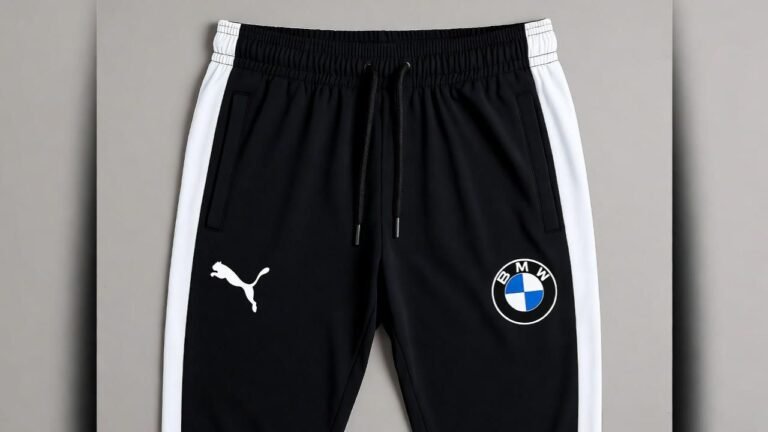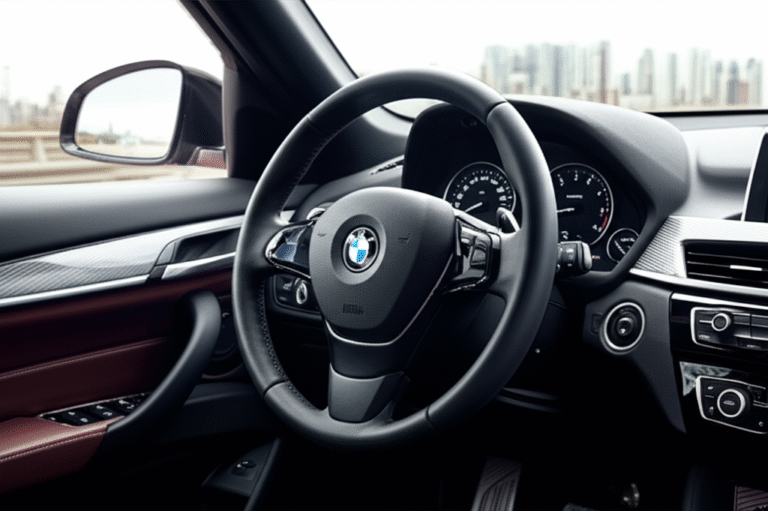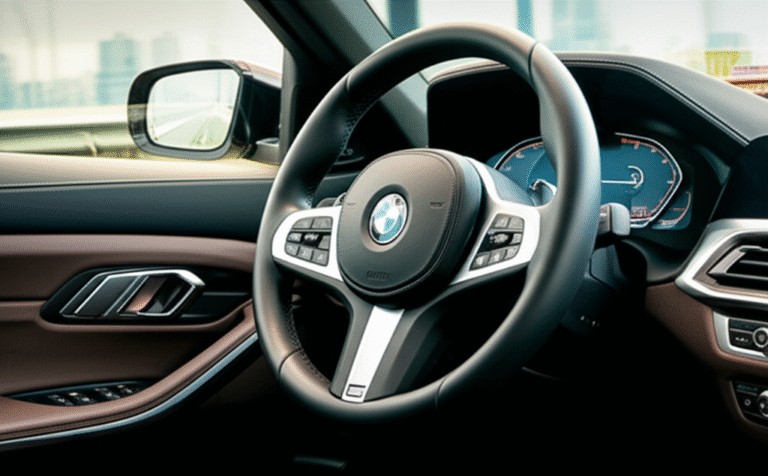BMW X3 Second Hand: 6 Bold Deals
Find your perfect BMW X3 second hand with our guide to six bold deals, offering luxury and performance value without the new car price tag. Discover smart buying tips for this popular SUV in the USA.
Key Takeaways
Secure excellent value on a pre-owned BMW X3.
Identify the best second-hand X3 models.
Understand key inspection points for used luxury SUVs.
Navigate financing and paperwork with confidence.
Save thousands on your next premium driving experience.
Compare top bold deals for your budget.
Finding a great SUV can be exciting. You want space, style, and a bit of adventure. The BMW X3 often checks all these boxes. But buying a new one can be a significant investment. That’s why a second-hand BMW X3 is a fantastic option. Many of these vehicles offer incredible luxury and performance at a fraction of the original cost. Navigating the used car market might seem tricky, but we’re here to help. This guide will walk you through six bold deals and how to find them, making your second-hand X3 purchase a smooth and smart decision. Let’s explore how you can drive home a premium SUV with confidence.
Unveiling the Appeal: Why a Second-Hand BMW X3?
The BMW X3 has cemented its reputation as a top-tier compact luxury SUV. It masterfully blends the sporty driving dynamics BMW is known for with the practicality of an SUV. For buyers in the USA, it represents a compelling choice for daily commutes, family road trips, and navigating diverse American landscapes. Opting for a second-hand model amplifies its appeal by offering significant cost savings. You can access higher trim levels, more powerful engines, or advanced features that might be out of reach in the new car market. This makes a used X3 a smart financial decision for many.
The Allure of Pre-Owned Luxury
Purchasing a pre-owned vehicle, especially a luxury model like the BMW X3, comes with distinct advantages. The initial depreciation hit has already been absorbed by the first owner, meaning you get more car for your money. This allows you to potentially step into an X3 from a generation with more advanced technology or a higher original MSRP. For example, a well-maintained second-generation X3 (2010-2017) or a early third-generation model (2017 onwards) can offer near-new driving experiences at a used car price point.
Performance and Practicality Combined
What makes the X3 so popular is its versatility. It offers an engaging driving experience, often with available xDrive all-wheel-drive, making it suitable for various weather conditions across the USA. Inside, you’ll find a comfortable and well-appointed cabin with plenty of space for passengers and cargo. This blend of sportiness and utility is a core reason for its enduring appeal, even in the second-hand market.
Your Guide to Six Bold Second-Hand BMW X3 Deals
When you’re looking for a BMW X3 second hand, focusing on specific generations and trim levels can help you find the best value. Here are six bold opportunities that often present themselves in the used market, along with what to look for.
1. The Value Champion: BMW X3 xDrive28i (F25 Generation, 2011-2017)
This generation of the X3 is a sweet spot for value. The xDrive28i, particularly models from 2014 onwards with the N20 2.0-liter turbocharged four-cylinder engine, offers a fantastic balance of performance and fuel efficiency. These models are known for their refined ride and capable handling.
Engine: 2.0L Turbocharged Inline-4 (N20)
Drivetrain: xDrive All-Wheel Drive standard
Key Features: Leather upholstery, panoramic sunroof, power liftgate, iDrive infotainment system.
Why it’s a bold deal: Excellent reliability for its era, strong horsepower for daily driving, and significantly more affordable than newer models.
What to check: Look for maintenance records, especially for oil changes and potential turbocharger issues. Check suspension components for wear.
2. The Performance Upgrade: BMW X3 xDrive35i (F25 Generation, 2011-2017)
If you crave more power, the xDrive35i from the same F25 generation is your target. It typically features the potent 3.0-liter turbocharged inline-six engine (N55). This provides exhilarating acceleration and a thrilling driving experience that many enthusiasts love.
Engine: 3.0L Turbocharged Inline-6 (N55)
Drivetrain: xDrive All-Wheel Drive standard
Key Features: Higher horsepower output, often found with premium packages including navigation, enhanced audio, and sportier suspension options.
Why it’s a bold deal: Offers supercar-like acceleration in an SUV package at a used price point. This engine is legendary for its power delivery.
What to check: These models can be harder on fuel. Inspect the turbocharger, cooling system, and look for any oil leaks. Regular maintenance is crucial.
3. The Refined Modern: BMW X3 sDrive30i/xDrive30i (G01 Generation, 2018-Present, Early Models)
The third-generation X3 (G01) brought a significant leap in technology, interior design, and driving dynamics. Early models, such as the 2018-2019 xDrive30i or sDrive30i (rear-wheel drive, less common in the US), offer the latest generation’s benefits at a more accessible price than brand-new versions.
Engine: 2.0L Turbocharged Inline-4 (B48)
Drivetrain: Available in sDrive (RWD) or xDrive (AWD)
Key Features: Updated iDrive system, advanced driver-assistance features (optional), sharper exterior styling, more spacious interior.
Why it’s a bold deal: Get modern BMW luxury and tech for less than a new model. The B48 engine is known for its smoothness and efficiency.
What to check: Verify all electronic features are working. Check for any software updates and ensure the infotainment system is responsive. Inspect the condition of the interior materials carefully.
4. The Sporty Edge: BMW X3 M40i (G01 Generation, 2018-Present, Early Models)
For performance enthusiasts who want more than the standard 30i, the M40i variant is a fantastic option. It boasts a more powerful engine, sport-tuned suspension, and distinctive M Performance styling cues. Early used M40i models are truly bold deals for their performance-per-dollar.
Engine: 3.0L Turbocharged Inline-6 (B58) with mild-hybrid technology
Drivetrain: xDrive All-Wheel Drive standard
Key Features: Significantly more horsepower and torque than the 30i, M Sport brakes, M Sport suspension, M Sport exhaust, M badging.
Why it’s a bold deal: Offers a taste of M-division performance without the stratospheric price of a full-blown X3 M. The B58 engine is a marvel of engineering.
What to check: Given the performance focus, check the condition of tires, brakes, and suspension. Look for signs of aggressive driving. Ensure the exhaust note is as expected.
5. The Fuel-Efficient Option: BMW X3 xDrive30e (G01 Generation, Plug-in Hybrid, Early Models)
For those looking to reduce fuel costs and emissions, a second-hand X3 xDrive30e is an excellent choice. These plug-in hybrids offer electric-only range for shorter trips and the flexibility of a gasoline engine for longer journeys. Early models provide a gateway into BMW’s electrified SUV offerings.
Engine: 2.0L Turbocharged Inline-4 + Electric Motor
Drivetrain: xDrive All-Wheel Drive standard
Key Features: Combined horsepower, significant electric-only range, reduced fuel consumption, quiet operation in EV mode.
Why it’s a bold deal: Access to hybrid technology from a reputable luxury brand at a used car price. Can offer substantial savings on fuel.
What to check: Crucially, check the condition and range of the battery. Ensure charging ports are clean and functional. Test drive in both EV and hybrid modes. Research battery warranty specifics.
6. The Budget-Conscious Find: BMW X3 (E83 Generation, 2003-2010)
While older, the first-generation X3 (E83) can still be a practical and stylish SUV if you prioritize affordability and the BMW driving feel above all else. These models are known for their robust build and, if well-maintained, can offer reliable service.
Engine: Typically 3.0L Inline-6 (M54 or N52)
Drivetrain: Available in xDrive (AWD) or RWD (rare)
Key Features: More basic features compared to newer generations, but still offers a premium feel for its time.
Why it’s a bold deal: The most affordable entry point into X3 ownership. Can be found for a fraction of the price of newer models.
What to check: These older vehicles will require more diligent inspection. Focus on rust, suspension wear, electrical gremlins, and the condition of interior components. A pre-purchase inspection by a BMW specialist is highly recommended.
Essential Checks Before You Buy: A Buyer’s Checklist
Purchasing any second-hand vehicle requires careful due diligence. For a premium SUV like the BMW X3, a thorough inspection is even more critical. Here’s a checklist to ensure you’re making a wise investment.
Mechanical Inspection: The Heartbeat of Your X3
Engine Sounds: Listen for unusual noises (knocking, ticking, whining) when the engine is cold and at operating temperature.
Fluid Levels and Condition: Check coolant, oil, brake fluid, and power steering fluid. Dirty or low fluids can indicate neglect.
Leaks: Look underneath the vehicle for any signs of fluid leaks.
Exhaust Smoke: Blue smoke indicates oil burning; black smoke suggests fuel combustion issues; white smoke can mean coolant leaks.
Transmission: Test drive to ensure smooth shifts in all gears. Listen for any clunking or slipping.
Brakes: Check brake pad thickness and rotor condition. Feel for pulsations through the brake pedal.
Suspension: Drive over bumps and listen for clunks or rattles. Check for uneven tire wear, which can point to alignment or suspension issues.
Exterior Condition: The First Impression
Body Panels: Inspect for dents, scratches, and rust. Ensure panel gaps are even, indicating no major accident repairs.
Paint: Look for overspray, mismatched paint colors, or signs of touch-up work.
Tires: Check tread depth and look for uneven wear patterns.
Glass: Inspect all windows and mirrors for chips or cracks.
Headlights and Taillights: Ensure they are clear and free from condensation.
Interior Comfort and Technology: The Cabin Experience
Upholstery: Check leather for tears, cracks, or excessive wear. Inspect carpets and headliner.
Electronics: Test all power windows, locks, mirrors, stereo system, navigation, climate control (AC and heat), and any heated/ventilated seats.
Dashboard Lights: Ensure no warning lights (check engine, ABS, airbag) are illuminated.
Infotainment System: Navigate through the menus, test Bluetooth connectivity, and check the display for any issues.
Pedals and Steering Wheel: Wear on these components can sometimes indicate higher mileage than shown on the odometer.
Documentation and History: Peace of Mind
Vehicle History Report (e.g., CarFax, AutoCheck): This is essential. It reveals accident history, odometer discrepancies, previous ownership, and title status. Look for reports that show consistent maintenance. You can learn more about vehicle history reporting from resources like the National Highway Traffic Safety Administration (NHTSA) at .
Service Records: A car with a documented maintenance history is always a safer bet.
Owner’s Manual: Ensure it’s present.
Pro Tip:
Always request a pre-purchase inspection (PPI) from an independent mechanic who specializes in BMWs. This small investment can save you from major headaches and costly repairs down the road.
Financing and Paperwork: Securing Your BMW X3
Once you’ve found the right BMW X3 second hand, the next steps involve financing and completing the purchase paperwork. Understanding this process is key to a smooth transaction.
Financing Options for Used Luxury Cars
Dealership Financing: Many dealerships offer financing options. Compare their rates with your bank or credit union.
Bank/Credit Union Loans: Pre-approval from your bank or credit union can give you negotiating power and a clear budget.
BMW Certified Pre-Owned (CPO): If purchasing from a BMW dealership, CPO vehicles often come with extended warranties and special financing rates, though they may be priced slightly higher.
The Paper Trail: What You Need
Bill of Sale: This legally binding document details the purchase, including the vehicle’s VIN, price, buyer and seller information, and date.
Title Transfer: The seller must sign over the vehicle title to you. Ensure it’s clear of any liens.
Registration and Plates: You’ll need to register the vehicle with your state’s Department of Motor Vehicles (DMV). This involves submitting the title, proof of insurance, and paying applicable fees and taxes. In the USA, state DMVs handle this; for example, the California DMV offers extensive online resources.
Insurance: You must have active auto insurance before you can register the vehicle and drive it legally.
Maintaining Your Second-Hand BMW X3: Longevity and Value
Owning a BMW X3, even a used one, comes with the responsibility of proper maintenance to ensure its longevity and performance. While German engineering is robust, regular care is paramount.
Key Maintenance Items
Oil Changes: Follow BMW’s recommended intervals or consult your owner’s manual. Using the correct synthetic oil is vital.
Fluid Checks: Regularly check and top off coolant, brake fluid, power steering fluid, and windshield washer fluid.
Brake System: Inspect brake pads and rotors during routine service. BMW brakes can be sensitive, so use quality parts.
Tires: Rotate tires regularly to ensure even wear and check tire pressure.
Filters: Replace engine air filters, cabin air filters, and fuel filters as recommended.
* Spark Plugs: These require periodic replacement, especially on older models, to maintain engine performance and efficiency.
Understanding BMW Maintenance Schedules
BMW typically provides detailed maintenance schedules. For second-hand models, it’s wise to err on the side of caution. If you don’t have the previous owner’s records, consider performing a comprehensive service upon purchase, including fluid changes, filter replacements, and a thorough inspection of brakes and suspension. Websites like offer owner resources that can help understand typical maintenance needs.
When to Seek Professional Help
While some maintenance tasks are DIY-friendly, complex issues or diagnostics are best left to certified BMW technicians or reputable independent shops specializing in European cars. They have the specialized tools and knowledge to properly service your X3.
Frequently Asked Questions About Second-Hand BMW X3 Deals
Here are some common questions beginner buyers have about purchasing a used BMW X3.
What is the best BMW X3 generation to buy used?
The F25 generation (2011-2017) offers a great balance of features, performance, and price. The G01 generation (2018 onwards) provides more modern tech and design but will be more expensive. Your choice depends on your budget and priorities.
How many miles is too many for a used BMW X3?
Ideally, look for X3s with under 100,000 miles. However, a well-maintained X3 with a solid service history can be a good buy even with higher mileage, especially if it’s from a more recent generation. Always prioritize maintenance records over mileage alone.
Are used BMW X3s expensive to maintain?
Compared to non-luxury brands, BMWs can have higher maintenance costs due to specialized parts and labor. However, by purchasing a model known for reliability, keeping up with routine maintenance, and finding a good independent mechanic, you can manage these costs effectively. Early models may require more attention.
What are common problems with the BMW X3?
Issues can vary by generation. Older F25 models might experience some turbocharger issues or oil leaks from gaskets. The G01 generation is generally more reliable, but like any modern complex vehicle, electronic glitches can occur. A pre-purchase inspection will help identify potential problems.
Should I buy a rear-wheel-drive (sDrive) or all-wheel-drive (xDrive) BMW X3?
In most parts of the USA, especially areas with snow or rain, the xDrive all-wheel-drive system is highly recommended for better traction and stability. The sDrive (rear-wheel drive) is less common in the US market and is generally suited for warmer climates or buyers who prioritize fuel economy and a sportier RWD feel.
How should I negotiate the price of a second-hand BMW X3?
Research market values for similar X3 models in your area using sites like Kelley Blue Book (KBB) or Edmunds. Use any findings from your pre-purchase inspection (e.g., needed repairs) as leverage to negotiate the price down. Be prepared to walk away if the deal isn’t right.
Conclusion: Your Premium SUV Awaits
The BMW X3 second hand offers a compelling pathway to premium SUV ownership. By focusing on models that represent excellent value, conducting thorough inspections, and understanding the purchase process, you can secure a bold deal that delivers driving pleasure and practicality for years to come. Whether you’re drawn to the peppy performance of an xDrive28i, the exhilarating power of an xDrive35i, or the modern sophistication of a G01-generation model, the market is ripe with opportunities. Approach your search with a clear plan, a keen eye for detail, and the knowledge gained from this guide, and you’ll be well on your way to driving home a BMW X3 that perfectly suits your lifestyle and budget. Happy hunting!



